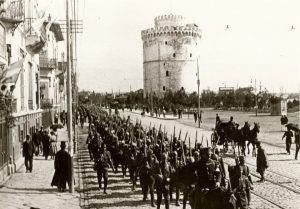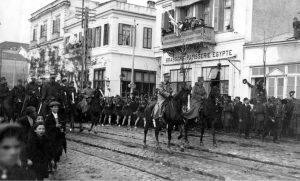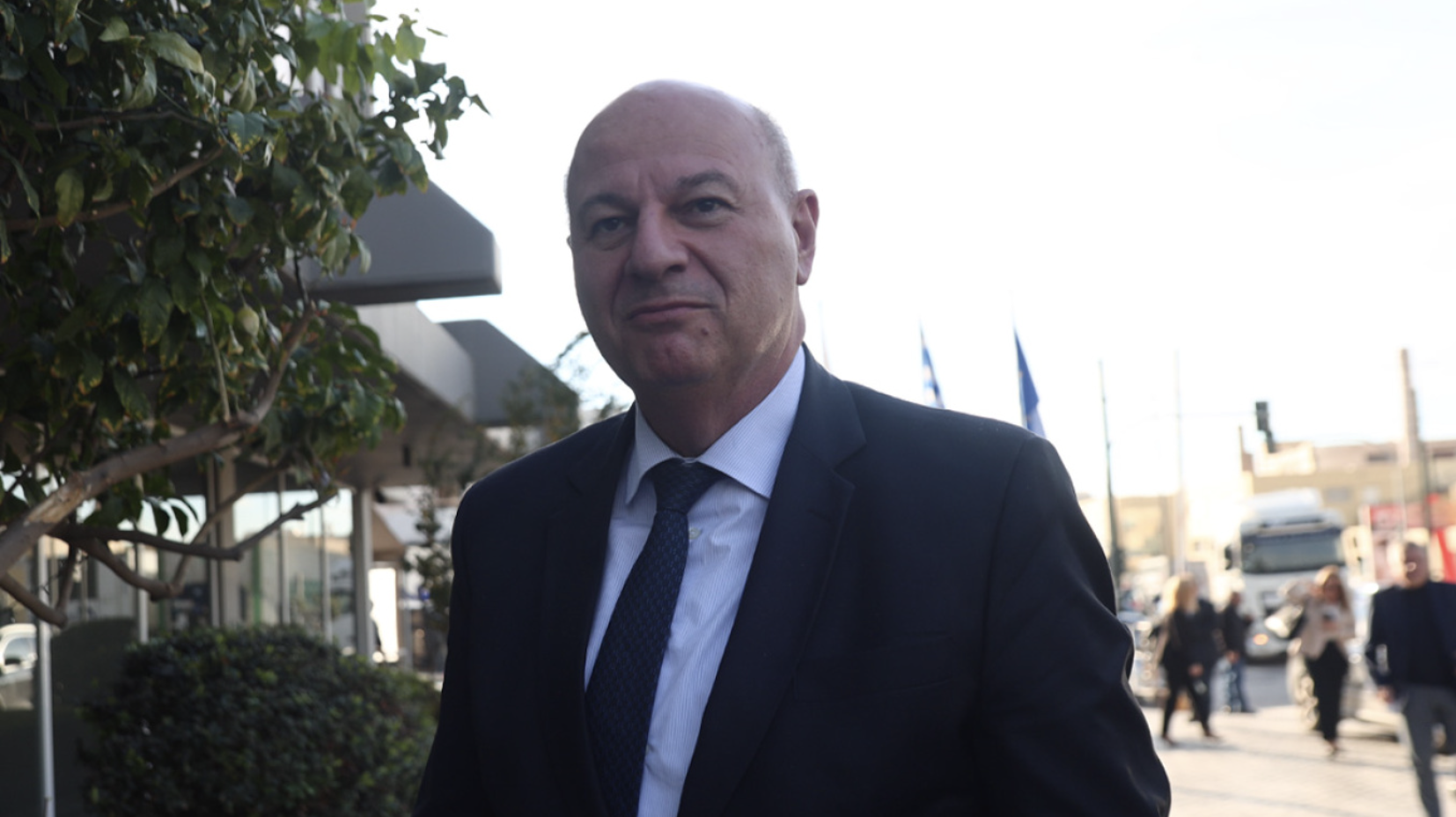It was October 26, 1912 when freedom bells rang in Thessaloniki, as the Greek army liberated the city from Ottoman rule. The city was freed only 20 days after the declaration of the First Balkan War.
At the start of the 20th century, the Balkan region was a powder keg ready to explode. The nationalist “Young Turks” movement had taken control of the Ottoman Empire. The issue of the union of Crete with Greece had soured relations between Greece and Turkey, while the temporary liberation of the Dodecanese islands during the Italian-Turkish War triggered still more friction between the two.
The then-prime minister of Greece, Eleftherios Venizelos, was closely following diplomatic developments in the international field. Venizelos noted that the Greek state was in a phase of reconstruction. His efforts to prevent an armed conflict ended with the declaration of war against Turkey by Montenegro on September 25, 1912. A few days later, and in light of the above developments, Greece officially aligned with Serbia and Bulgaria.

On October 13, the three Balkan countries sent a joint ultimatum to the Ottoman Porte requesting to resolve a series of issues, including the ratification of the national autonomy of the Christian communities. The ultimatum was rejected, and military operations replaced diplomacy.
The armies of Serbia and Montenegro gathered in northern Macedonia and Albania, while Greek forces took over the fronts of South Macedonia and Epirus. The Bulgarians, in turn, were placed in the Thrace region, but their plan was actually to move into Macedonia, with the ultimate goal to take over Thessaloniki.
Two days later, the Greek army scored its first victory by taking over Sarantaporo, opening the path to Macedonia. With the Turks retreating, Greek forces began to advance from Kozani, Grevena, and Katerini.

At the same time, the Bulgarians were increasingly eager to move into Thessaloniki. Venizelos realized that Greece was in danger of losing the most important city in Macedonia. He ordered the Hellenic Army Commander-in-Chief Crown Prince Constantine, who was moving north to Monastiri, to change course to prevent a Bulgarian invasion. In response, Constantine led the Greek army to the east. On their way, however, Constantine’s forces had to go through Giannitsa, a holy city for the Muslims.
It was there that five Greek army divisions and one cavalry brigade collided with the Turkish forces, which consisted of six artillery units and five divisions. A tough two-day battle followed on October 19-20, with many losses on both sides. In the end, the Greek army triumphed in Giannitsa, forcing the Turks to retreat to Thessaloniki.
Read more HERE
Ask me anything
Explore related questions





